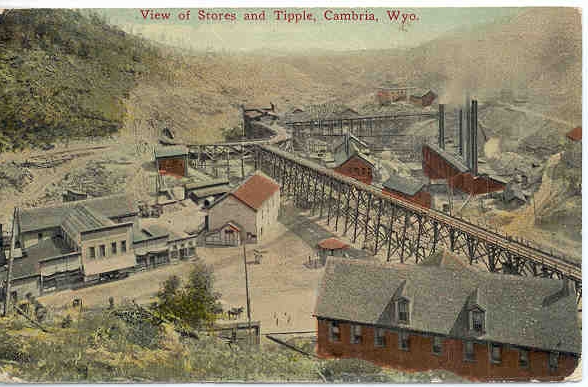
Cambria, Wyoming, 1916
Cambria, Wyoming, northwest of Newcastle, was established in 1887 as a company
owned coal mine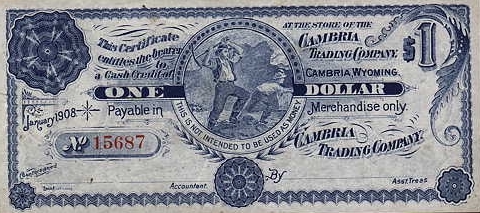 by Kilpatrick Brothers and Collins, contractors to the Chicago,
Burlington & Quincy Railroad. By 1895, the population had grown to 329 and by 1904 a population
of approximately 1400. At its height the town had more than 150 houses, two churches, an Odd Fellows Lodge,
a two story hotel, pictured below, an opera house,
and a large commissary at which Company script could be used. See example to right.
By 1904 the mine employed over 500 men. by Kilpatrick Brothers and Collins, contractors to the Chicago,
Burlington & Quincy Railroad. By 1895, the population had grown to 329 and by 1904 a population
of approximately 1400. At its height the town had more than 150 houses, two churches, an Odd Fellows Lodge,
a two story hotel, pictured below, an opera house,
and a large commissary at which Company script could be used. See example to right.
By 1904 the mine employed over 500 men.
As a Company owned town, there were no saloons, dance halls or other places of
resort for lonely miners. This probably also contributed to the growth of
Newcastle which had such attractions.
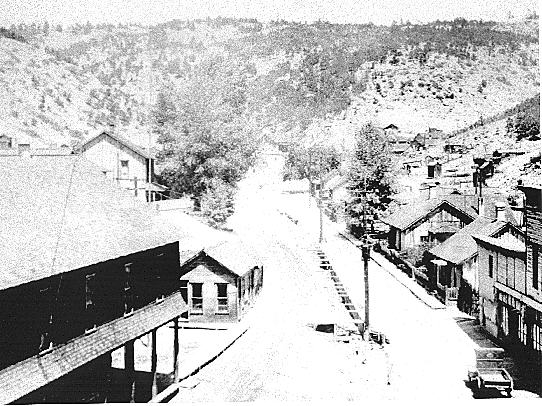
Cambria, Wyoming, undated
By 1928 the coal deposits were no longer sufficient to economically mine. Cambria was abandoned and, as illustrated by
the photos below, rapidly fell into ruin. On December 31, 1928, the post office
which had been established in 1890 was discontinued. Today little more is visible except the
street patterns.
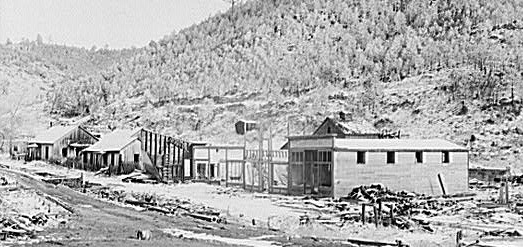
Cambria, Wyoming, November 1937, R. Lee
Compare this scene with the photo at top of page. This photo, together with the
remaining photos on this page,  were taken by Russell Lee (1903-1986), photo to right, for the Farm Security Administration, a New
Deal program. Lee was a compatriot of photographer Arthur Rothstein. Several of Rothstein's
pictures are included in the Big Horn Basin and Medicine Bow pages of this
website.
were taken by Russell Lee (1903-1986), photo to right, for the Farm Security Administration, a New
Deal program. Lee was a compatriot of photographer Arthur Rothstein. Several of Rothstein's
pictures are included in the Big Horn Basin and Medicine Bow pages of this
website.
Lee worked as a part of the Historical Section of the Farm Security Administration under
the creative supervision of Roy Stryker (1893-1975). Stryker, originally a Columbia
University economist, was described by one photographer who worked for him later as
"an archivist. He didn't give a damn about a picture at the time it was made.
He was interested in what it would mean twenty years later... He was saving
pictures for a record of the past."
During the period 1935 to 1942, the Historical Section created 77,000 photographs, the purpose of which
was to gain support for the Administration by depicting the poverty
of farmers and migrant workers. Thus, as also illustrated by Rothstein's photos,
the pictures tended to be bleak and depressing. In his later life, Lee became the first
professor of photography at the University of Texas, Austin.
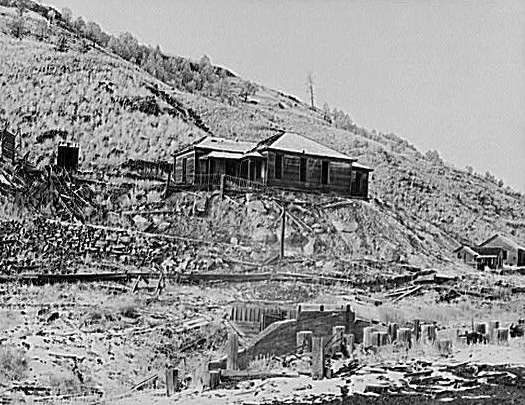
Superintendent's House, Cambria, November 1937, R. Lee
Below the house are the remains of the
railroad station. The Burlington received permission from the Interstate Commerce Commission
to abandon the line to Newcastle in 1929.
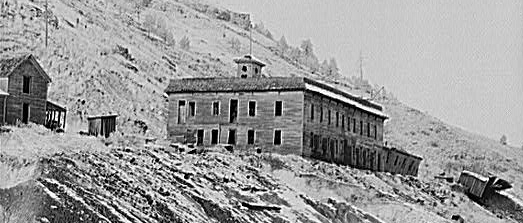
Hotel, Cambria, November, 1937, R. Lee.
In 1923,
the Company started construction of a smaller resort facility to be known as
the "Cambria Casino Park," which was completed
in 1928. With the closing of the mine, the smaller and newer facility was leased
to the Fying V Ranch which had cattle operations in the area. The new facility
was subsequently operated as a bible camp, a dude ranch and is still in operation
today as a bed and breakfast known as the Flying V Cambria Inn.
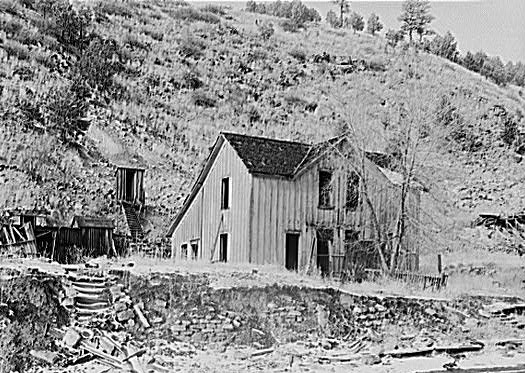
Abandoned House, Cambria, November 1937, R. Lee
More ghost towns on next page.
|